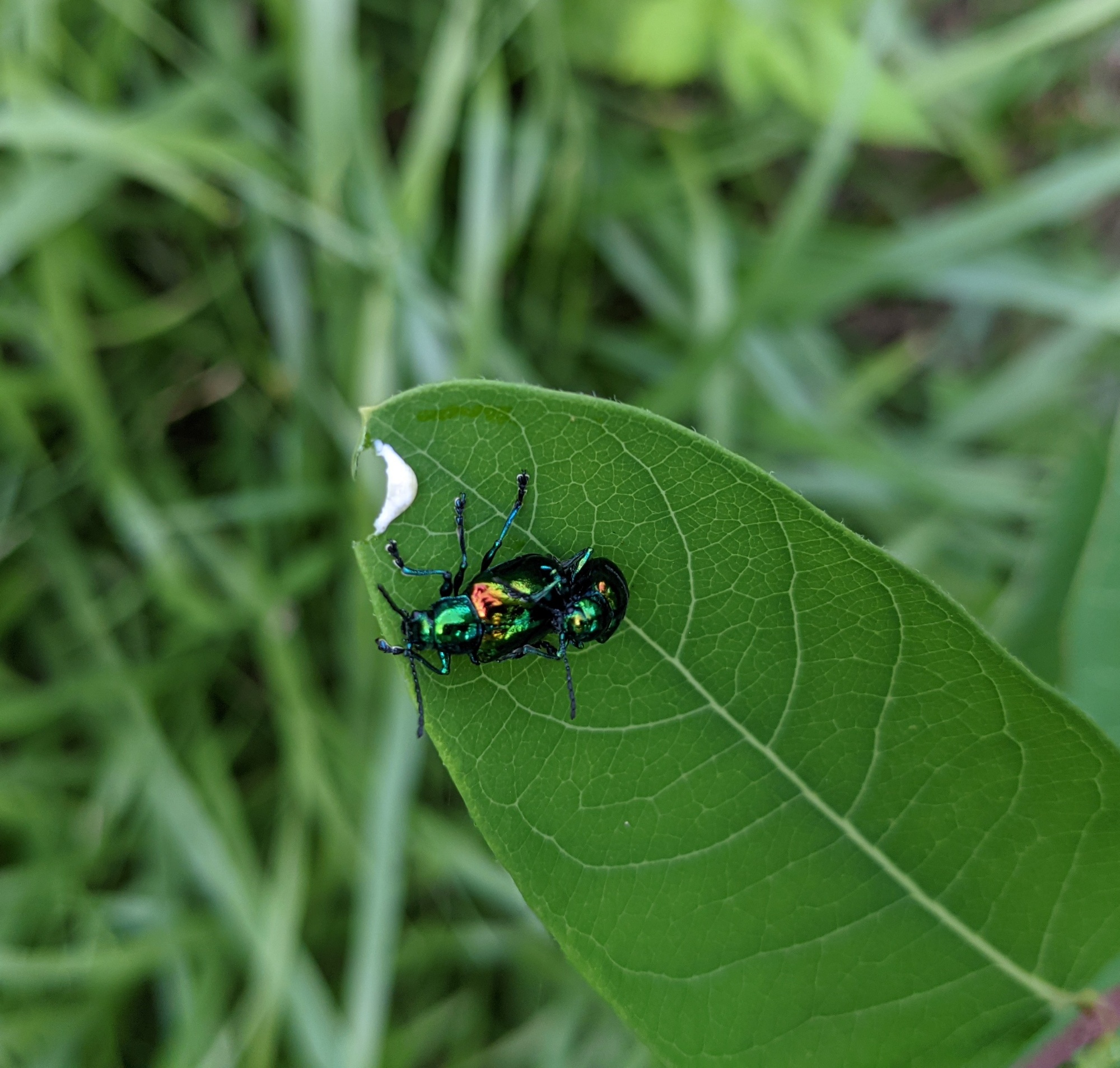
While foraging just-ripening blackberries for water kefir, I came across some striking beetles in the far pasture. Their metallic iridescence could not be ignored, so I captured a couple of photos as I traversed the back fields.
After collecting the berries – I was a bit disappointed to discover that the bushes down by the stream bed were teasingly festooned by not-quite-ripe bright red fruit but did find a few ripe black raspberries there) – I headed back to look the beetles up. It turns out that they’re dogbane beetles, and the specific plant they were on is called dogbane.
Dogbane is related to milkweed, and it exudes a milky sap when damaged (also like milkweed). And yes, the dogbane beetle eats dogbane. It also apparently mates on it, as evidenced by the activity on the plants.

The dogbane beetle has a practical way of dealing with the sticky sap that oozes out of the plant as the beetle chews the leaves – it wipes away gooey sap it encounters by walking backwards with its head lowered, thereby rubbing the sap off. The diminutive beetle can afford to be showy because it also incorporates the potent toxins produced by the dogbane plant into its own defenses. When you’re bad, you know it.
Remember to really see what’s around you…and you may spy some unexpected insects, too!
